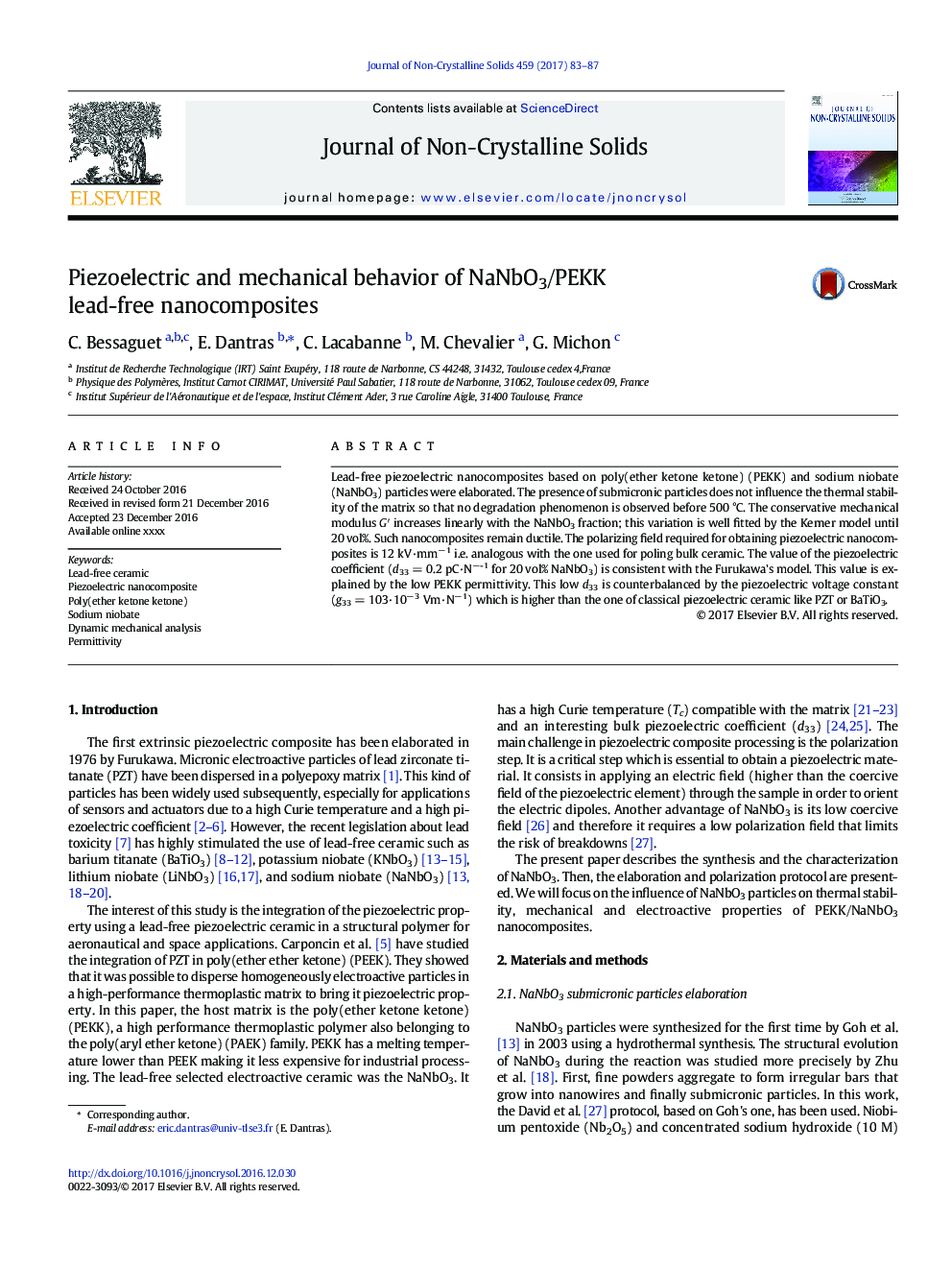| Article ID | Journal | Published Year | Pages | File Type |
|---|---|---|---|---|
| 5441435 | Journal of Non-Crystalline Solids | 2017 | 5 Pages |
Abstract
Lead-free piezoelectric nanocomposites based on poly(ether ketone ketone) (PEKK) and sodium niobate (NaNbO3) particles were elaborated. The presence of submicronic particles does not influence the thermal stability of the matrix so that no degradation phenomenon is observed before 500 °C. The conservative mechanical modulus Gâ² increases linearly with the NaNbO3 fraction; this variation is well fitted by the Kerner model until 20 vol%. Such nanocomposites remain ductile. The polarizing field required for obtaining piezoelectric nanocomposites is 12 kV·mmâ 1 i.e. analogous with the one used for poling bulk ceramic. The value of the piezoelectric coefficient (d33 = 0.2 pC·Nâ-1 for 20 vol% NaNbO3) is consistent with the Furukawa's model. This value is explained by the low PEKK permittivity. This low d33 is counterbalanced by the piezoelectric voltage constant (g33 = 103·10â 3 Vm·Nâ 1) which is higher than the one of classical piezoelectric ceramic like PZT or BaTiO3.
Keywords
Related Topics
Physical Sciences and Engineering
Materials Science
Ceramics and Composites
Authors
C. Bessaguet, E. Dantras, C. Lacabanne, M. Chevalier, G. Michon,
